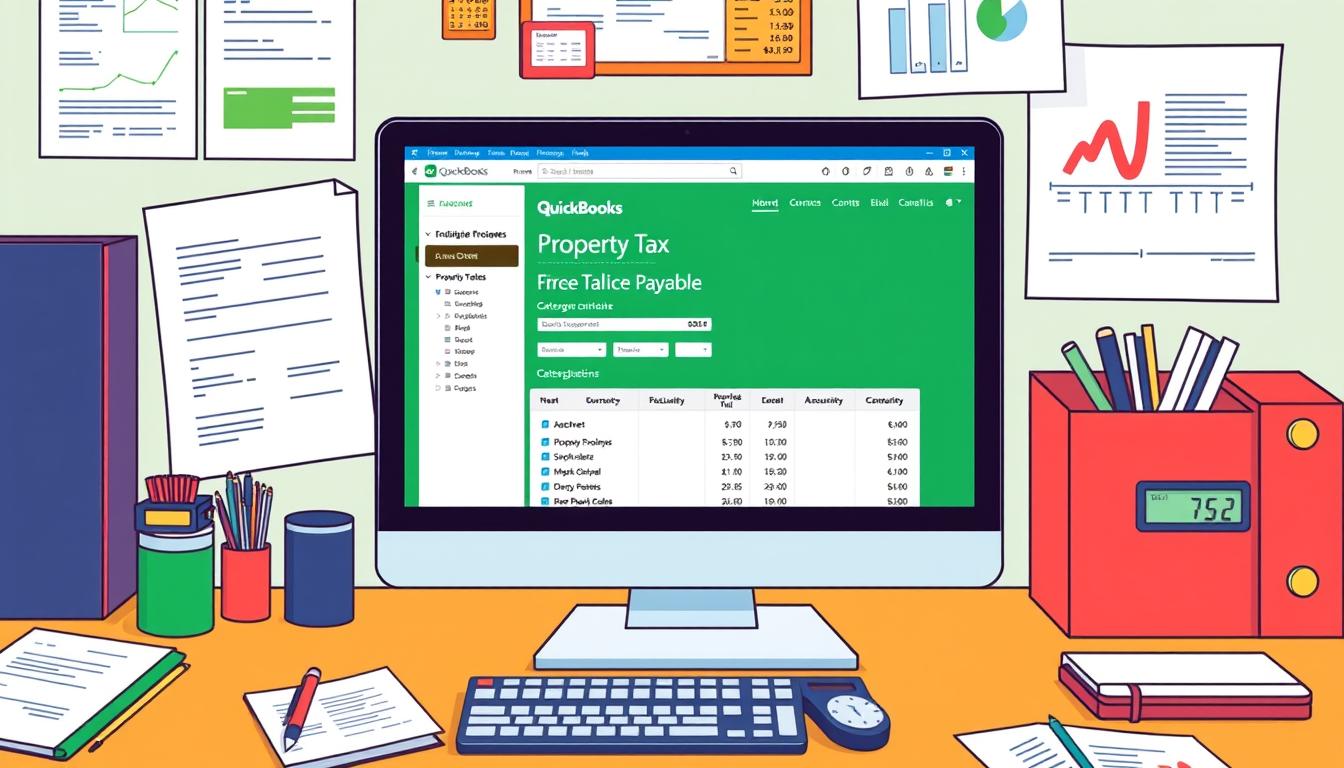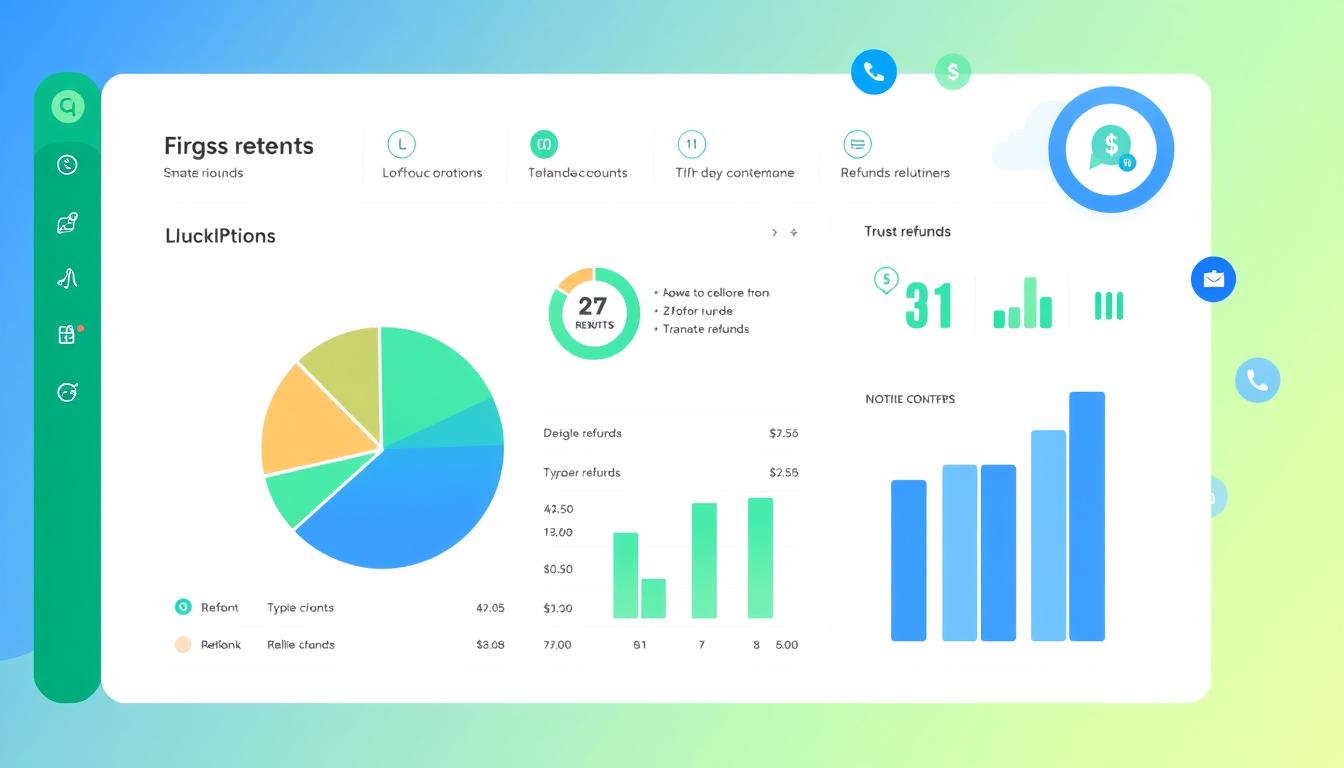
What does deposited mean in quickbooks

Table of Contents
In QuickBooks, “deposited” means recording money that has come in and is ready to use. This includes things like customer payments and bank transfers. It’s important to mark these correctly to keep your financial records up to date.
Learning about this term helps businesses track their money better. It makes sure their financial reports are accurate.
Key Takeaways
- The “deposited” term indicates received funds recorded in QuickBooks.
- Accurate deposits are vital for a correct financial overview.
- Deposits may include customer payments and bank transfers.
- Understanding deposits in QuickBooks helps in financial accuracy.
- Consistently marking transactions as deposits enhances cash flow management.
Understanding the Concept of Deposited
The idea of deposited is key in financial accounting, especially in QuickBooks. When money is marked as deposited, it means it’s been received and recorded. This is important to tell incoming money from money that’s still waiting.
Knowing about financial deposits helps businesses keep their records right. QuickBooks makes it easy to track money and see how well a business is doing. This helps keep things clear and honest.
This knowledge helps with financial checks and making smart choices. It’s crucial for businesses to know which money has been deposited. This helps manage cash flow better.
| Transaction Type | Description | QuickBooks Handling |
|---|---|---|
| Deposited Funds | Money received and recorded in the accounts | Marked as deposited for clear tracking |
| Pending Transactions | Funds that are yet to be confirmed | Not marked, awaiting confirmation |
| Returned Deposits | Funds that were initially deposited but reversed | Requires adjustment or deletion |
Importance of Deposits in Financial Tracking
Deposits are key to tracking finances and help manage cash flow. They show how much money a business has, guiding spending and investments. Knowing when and how much to deposit helps predict cash flow, keeping operations running smoothly.
Impact on Cash Flow Management
Deposits are more than just adding money; they’re crucial for managing cash flow. Businesses must watch their cash closely to avoid money problems. A timely deposit can keep finances stable, preventing slowdowns.
Tracking deposits helps companies plan their finances well.
Record Keeping and Accuracy
Keeping accurate records in QuickBooks is vital for financial health. Every deposit record must be right to show a business’s true financial state. Wrong entries or missed deposits can cause problems, affecting audits and business decisions.
Being strict about record keeping makes financial reports reliable. It helps make better decisions.
| Aspect | Description | Benefits |
|---|---|---|
| Cash Flow Monitoring | Regular tracking of deposits | Prevents liquidity issues |
| Deposit Accuracy | Ensuring correct entries in QuickBooks | Avoids discrepancies in reporting |
| Financial Planning | Using deposit data to forecast needs | Supports investment decisions |
The Deposited Process in QuickBooks
Learning how to make a deposit in QuickBooks can make your business’s finances easier to manage. This guide will walk you through the steps to record deposits accurately.
Step-by-Step Guide to Making a Deposit
To record a deposit in QuickBooks, follow these steps:
- Navigate to the “Banking” menu on the main dashboard.
- Select “Make Deposits” to open the deposit window.
- Enter the deposit date in the field provided.
- Choose the accounts to receive the funds.
- Specify the amount for each account.
- Save the transaction to complete the deposit record.
Common Scenarios for Deposits
There are various situations where you might need to make a deposit in QuickBooks. Knowing these scenarios can help you use the software better. Here are some common ones:
- Customer payments for services rendered.
- End-of-day cash reconciliation to balance cash registers.
- Transferring money between different business accounts.
Each situation requires specific steps to keep your financial records clear and accurate. Following these steps can improve your record-keeping and make operations smoother.
| Scenario | Description | Steps to Record |
|---|---|---|
| Customer Payments | Payments received from clients. | Use the ‘Sales Receipt’ or ‘Receive Payments’ option. |
| Cash Reconciliation | Balancing cash in the register at day’s end. | Record cash totals under ‘Make Deposits.’ |
| Account Transfers | Moving funds between different accounts. | Select ‘Transfer Funds’ to document the movement. |
By mastering these processes, businesses can improve their deposit recording. This leads to better financial management.
QuickBooks and Its Role in Managing Deposits
QuickBooks is a top choice for businesses looking to simplify their finances, especially when it comes to managing deposits. It offers many useful features. These help make deposit management accurate and organized.
Features of QuickBooks Related to Deposits
The QuickBooks deposit features make handling money easy. Key features include:
- Customizable deposit forms that fit business needs
- Tools for automatic matching of deposits with bank statements
- Direct links between deposits and customer invoices for easy tracking
These features boost QuickBooks efficiency and cut down on errors when entering deposits.
How QuickBooks Simplifies Deposit Tracking
QuickBooks makes tracking deposits easy with detailed reports. This helps businesses:
- Spot and fix any issues right away
- Keep a tidy record of financial activities, improving cash flow management
- Save time with automation, letting them focus on their main work
QuickBooks automates much of the deposit process. This changes how businesses track their money, leading to better financial management.
Types of Deposits You Can Enter in QuickBooks
Knowing the different types of deposits in QuickBooks is key for good financial management. The platform offers tools to make tracking finances easy. This ensures users can manage their money well.
Customer Payments
For businesses, entering customer payments is a must. QuickBooks makes it simple to log these payments through invoices or sales receipts. This helps keep track of what’s owed and boosts cash flow.
Bank Transfers
Bank transfers in QuickBooks move money between accounts. It’s easy to record these transactions, keeping both accounts balanced. Accurate bank transfer records are important for clear finances.
Sales Revenue
Recording sales revenue is crucial for business performance. QuickBooks tracks income from different sources like credit cards, checks, or cash. Categorizing and recording sales revenue helps businesses understand their sales better.
Deposited vs. Cleared Transactions in QuickBooks
In QuickBooks, knowing the difference between deposited and cleared transactions is key. Deposited transactions are the funds your business has gotten and put into your accounting system. These can come from many places, like customer payments or bank deposits. It’s important to track these for good cash flow management.
Cleared transactions, however, are about payments or checks that the bank has processed. They show that money has moved in or out of your business’s bank account. It’s vital to match these cleared transactions with the deposited amounts. This helps keep your financial status accurate.
To make things clearer, here’s a table:
| Transaction Type | Definition | Implications |
|---|---|---|
| Deposited Transactions | Funds received and recorded in QuickBooks | Indicates income flow into the business |
| Cleared Transactions | Payments or checks processed by the bank | Confirms availability of funds for business use |
Grasping these financial terms helps you make better choices for your business. By keeping track of both deposited and cleared transactions in QuickBooks, you improve your cash flow management. This ensures your financial records stay up to date.
Common Mistakes When Entering Deposits in QuickBooks
Keeping your accounting software like QuickBooks accurate is key for your business’s health. Users often face challenges that lead to depositing mistakes in QuickBooks. Small mistakes can cause big problems, leading to wrong financial insights and issues.
Overlooking Deposit Accounts
One common mistake is not picking the right deposit account. This might seem small but can really mess up your financial reports. If you pick the wrong account, you’ll get deposit account errors, making your records unreliable. It’s crucial to choose the right account when depositing to keep your finances accurate.
Incorrect Amounts and Their Consequences
Another mistake is entering incorrect amounts when depositing. These errors can lead to big financial problems and confuse your account balances. They can also make managing cash flow harder and complicate audits or tax time. Fixing these problems early helps your business avoid financial trouble and keeps things running smoothly.
| Mistake Type | Description | Potential Consequences |
|---|---|---|
| Overlooking Deposit Accounts | Failing to select the correct deposit account. | Inaccurate financial records and misleading reports. |
| Incorrect Amounts | Inputting wrong amounts when making a deposit. | Cash flow issues and discrepancies in account balances. |
How to Edit or Delete a Deposit in QuickBooks
Managing deposits in QuickBooks can sometimes need adjustments or corrections. It’s important to know how to edit or delete deposits to keep your financial records accurate. This section will show you how to edit deposits and when to delete them.
Steps to Edit a Deposit
Editing deposits in QuickBooks is easy:
- Open QuickBooks and go to the Banking menu.
- Choose the right bank account to see transactions.
- Find the deposit you want to change.
- Click on the deposit and choose Edit.
- Change the deposit information as needed.
- After making changes, click Save and Close to update the records.
This way, you keep your records accurate while keeping historical data.
When to Delete a Deposit
There are times when you need to delete deposits in QuickBooks:
- When a deposit was entered wrong
- If the deposit is no longer needed in your financial records
Before deleting a deposit, think about when to remove transaction. Deleting a deposit can change your account balance history and reports. Make sure it’s the right choice.
Benefits of Properly Managing Deposits in QuickBooks
Managing deposits well in QuickBooks boosts a company’s financial health and insight. It helps keep records accurate, giving businesses tools for better planning. Knowing how to manage deposits is key for any business to thrive.
Enhanced Financial Reporting
Good deposit management means better financial reports in QuickBooks. When data is correct, financial statements are clear. This clarity helps spot trends and issues early.
These reports are crucial for making smart decisions. They also help track how well a business is doing financially.
Improved Business Insights
Tracking deposits accurately gives businesses important insights from QuickBooks. These insights can help increase profits. By understanding financial health and cash flow, businesses can make better plans.
Companies that use these insights can quickly respond to market changes. This ensures they stay successful in the long run.
Conclusion
Understanding deposits in QuickBooks is key for any business looking to manage its finances well. This summary shows that keeping track of deposits clearly helps in making smart decisions. It also aids in planning for the future.
QuickBooks offers tools that make managing deposits easier and less prone to mistakes. By doing this right, businesses can boost their financial health. This proves that managing deposits well is crucial for financial success.
Using QuickBooks helps companies keep their financial records up to date. This focus on detail leads to better financial reports and insights. It shows why QuickBooks is important for strategic planning.
FAQ
What does “deposited” mean in QuickBooks?
In QuickBooks, “deposited” means recording money that has come in. This includes payments from customers and bank transfers. It’s key for keeping financial records up to date.
Why is it important to understand the concept of “deposited”?
Knowing about “deposited” helps separate incoming money from pending transactions. This is vital for accurate financial reports and accounting.
How do deposits impact cash flow management?
Deposits affect cash flow by showing how much money is available. This helps business owners plan their spending and investments better.
What is the process for making a deposit in QuickBooks?
To make a deposit in QuickBooks, go to “Banking” and choose “Make Deposits.” Then, enter the date, select accounts, and specify amounts. This ensures the deposit is recorded correctly.
What features does QuickBooks offer for managing deposits?
QuickBooks has tools like customizable deposit forms and automated reconciliation. It also links deposits to invoices, making management easier and reducing errors.
What types of deposits can be entered in QuickBooks?
QuickBooks allows for various deposits, like customer payments and sales revenue. These help keep financial records accurate and clear.
What is the difference between deposited and cleared transactions?
“Deposited” means money has been received. “Cleared” means the bank has processed a payment. Knowing this helps manage cash flow better.
What are common mistakes to avoid when entering deposits in QuickBooks?
Avoid choosing the wrong deposit account and entering wrong amounts. These mistakes can cause big problems with financial records and cash flow.
How can I edit or delete a deposit in QuickBooks?
To edit a deposit, find the original entry and click “Edit.” To delete, only if it was wrong, as it changes account history.
What are the benefits of properly managing deposits in QuickBooks?
Good deposit management makes financial reports accurate. It gives insights into business performance, helping with decision-making and growth.
- Tags: intuit quickbooks, intuit quickbooks login, intuit quickbooks online, quickbook, quickbooks, quickbooks accounting software, quickbooks customer service, quickbooks customer service number, quickbooks desktop, quickbooks desktop 2024, quickbooks log in, quickbooks login, quickbooks login online, quickbooks online, quickbooks online accountant, quickbooks online accounting, quickbooks online customer service, quickbooks online login, quickbooks online pricing, quickbooks payroll, quickbooks self employed, quickbooks software, quickbooks support phone number, quickbooks time, quickbooks time login, quickbooks workforce
Top Products
- QuickBooks Desktop Pro 2024 US Version
- QuickBooks Desktop Pro 2023 US Version
- QuickBooks Desktop Pro 2022 US Version
- QuickBooks Desktop Premier 2024 US Version
- QuickBooks Desktop Premier 2023 US Version
- QuickBooks Desktop Premier 2022 US Version
- QuickBooks Desktop Accountant 2024 US Version
- QuickBooks Desktop Accountant 2023 US Version
- QuickBooks Desktop Enterprise 2024 US Version
- QuickBooks Desktop Enterprise 2023 US Version
- QuickBooks for Mac 2024
- QuickBooks for Mac 2023
Popular Posts

How to categorize property tax payable in quickbooks online
Knowing how to categorize property tax payable in QuickBooks Online is key for keeping your financial records right. Property tax payable is the amount your business owes in property taxes. It can greatly affect your financial health. By learning to categorize property tax well, businesses can make sure their financial statements show their true obligations.
This knowledge is crucial as we dive into the steps and best practices for handling property tax payable in QuickBooks Online.

How much is quickbooks per month
Many users want to know the QuickBooks pricing for monthly costs. QuickBooks has various plans for different business needs. This lets users pick the right plan for their financial management.
What affects the QuickBooks monthly cost includes the QuickBooks edition, payment frequency, and extra features. This guide will explain the details of these plans. It will help you understand the costs of using QuickBooks for your business.

How does quickbooks work
QuickBooks is a key accounting software made by Intuit. It helps businesses manage their finances well. It works on a cloud-based platform, so users can access their financial data from anywhere.
This software makes tasks like bookkeeping, invoicing, and financial reporting easier. In this article, we’ll look at QuickBooks’ main features, its users, benefits, and challenges. We aim to help you understand how it can improve your financial management.

How do you record insurance payment in quickbooks
Recording insurance payments in QuickBooks is key for good insurance accounting. It helps business owners manage their money well and keep their books right. This is vital for the health of any business.
In this guide, we’ll show you how to record insurance payments easily. We’ll use QuickBooks guides and tips from accounting experts. This way, you can keep your financial records up to date.

How do you clock in hours in quickbooks desktop
In today’s fast-paced world, tracking time well is key for good payroll management. This article will show you how to clock in hours in QuickBooks Desktop. It’s a top accounting software that makes managing tasks easier. By learning how to track time, businesses can work better and pay employees right.

How are refunds categorized in quickbooks online
Knowing how to categorize refunds in QuickBooks Online is key for good financial management. It’s important to record refunds correctly to keep your finances clear. Businesses of all sizes can benefit from knowing how to do this right.
This knowledge helps make your financial records clear and accurate. It’s a basic step that can make a big difference.

Does quoteiq accept quickbooks online payments
Payment solutions are key in today’s business world. Many are looking into how platforms like QuoteIQ can improve their invoicing. A big question is: does QuoteIQ accept QuickBooks Online Payments? This article explores how QuoteIQ and QuickBooks Online Payments work together.
This shows how important it is to have good payment integration. It helps with cash flow and makes operations smoother. We’ll look at the benefits of using QuoteIQ with QuickBooks Online Payments. Plus, we’ll show you how to set it up.

Can you delete history under audit log quickbooks online
It’s important to know if you can delete entries from the audit log in QuickBooks Online. This is key for businesses that focus on financial accuracy and follow the rules. The audit log QuickBooks Online keeps a detailed history of changes to financial data. This ensures that all account activities are recorded clearly.
By tracking these changes, the audit log is crucial for good financial management. We will look into why the audit log matters and what happens if you try to delete its records. We’ll see how these actions impact your QuickBooks history.

Can quickbooks recievepayment by statements rather that individual invoices
In today’s fast-paced world, businesses need quick and easy ways to handle payments. Many QuickBooks users wonder if they can pay by statements instead of invoices. This method makes accounting simpler for companies.
Using payment statements has big advantages over traditional invoices. QuickBooks helps businesses manage payments better. This article will show you how payment statements work in QuickBooks and how they can help your business.

Can quickbooks online payments work with simple start
For small business owners, the question of whether QuickBooks Online Payments and QuickBooks Simple Start can work together is key. This integration is vital for managing finances effectively. It helps users handle transactions smoothly while using a basic accounting tool for solo businesses.
QuickBooks Online Payments lets users take payments online, making cash flow management easier. In this article, we explore how these two tools can boost efficiency for small businesses.